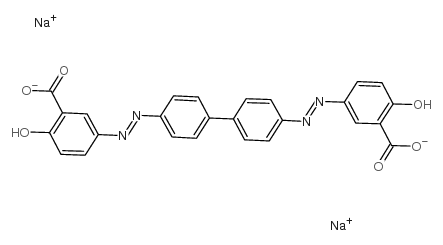Development of small molecule probes for the beta-amyloid protein of Alzheimer's disease.
W E Klunk, M L Debnath, J W Pettegrew
Index: Neurobiol. Aging 15(6) , 691-8, (1994)
Full Text: HTML
Abstract
This study describes the synthesis and in vitro testing of small molecule probes that may eventually prove useful as markers of amyloid deposition in living patients. The prototype agent, Chrysamine G (CG), is a derivative of Congo red. CG binds synthetic beta-amyloid well in vitro, as does a fluorinated derivative. The mechanism of binding appears to be the same as Congo red--through a bidentate attachment spanning several amyloid peptide chains. CG is much more lipophilic than Congo red and crosses the blood-brain barrier in normal mice, achieving a brain/blood ratio over 10/1. There was no acute toxicity in mice at doses 10 times those used in the distribution studies. CG appears to be a relatively high affinity probe for beta-amyloid that appears to have low toxicity and can cross the blood-brain barrier. These characteristics are promising for development of in vivo amyloid probes similar to CG.
Related Compounds
| Structure | Name/CAS No. | Molecular Formula | Articles |
|---|---|---|---|
 |
CHRYSAMINE G
CAS:6472-91-9 |
C26H16N4Na2O6 |
|
Imaging Abeta plaques in living transgenic mice with multiph...
2002-09-01 [J. Neuropathol. Exp. Neurol. 61 , 797-805, (2002)] |
|
Amyloid binding ligands as Alzheimer's disease therapies.
2002-01-01 [Neurobiol. Aging 23 , 1039-1042, (2002)] |
|
Chrysamine G and its derivative reduce amyloid beta-induced ...
2002-11-15 [Neurosci. Lett. 333 , 5-8, (2002)] |
|
99mTc-MAMA-chrysamine G, a probe for beta-amyloid protein of...
1999-11-01 [Eur. J. Nucl. Med. 26(11) , 1392-9, (1999)] |
|
Inhibition of polyglutamine aggregation in R6/2 HD brain sli...
2001-12-01 [Neurobiol. Dis. 8(6) , 1017-26, (2001)] |